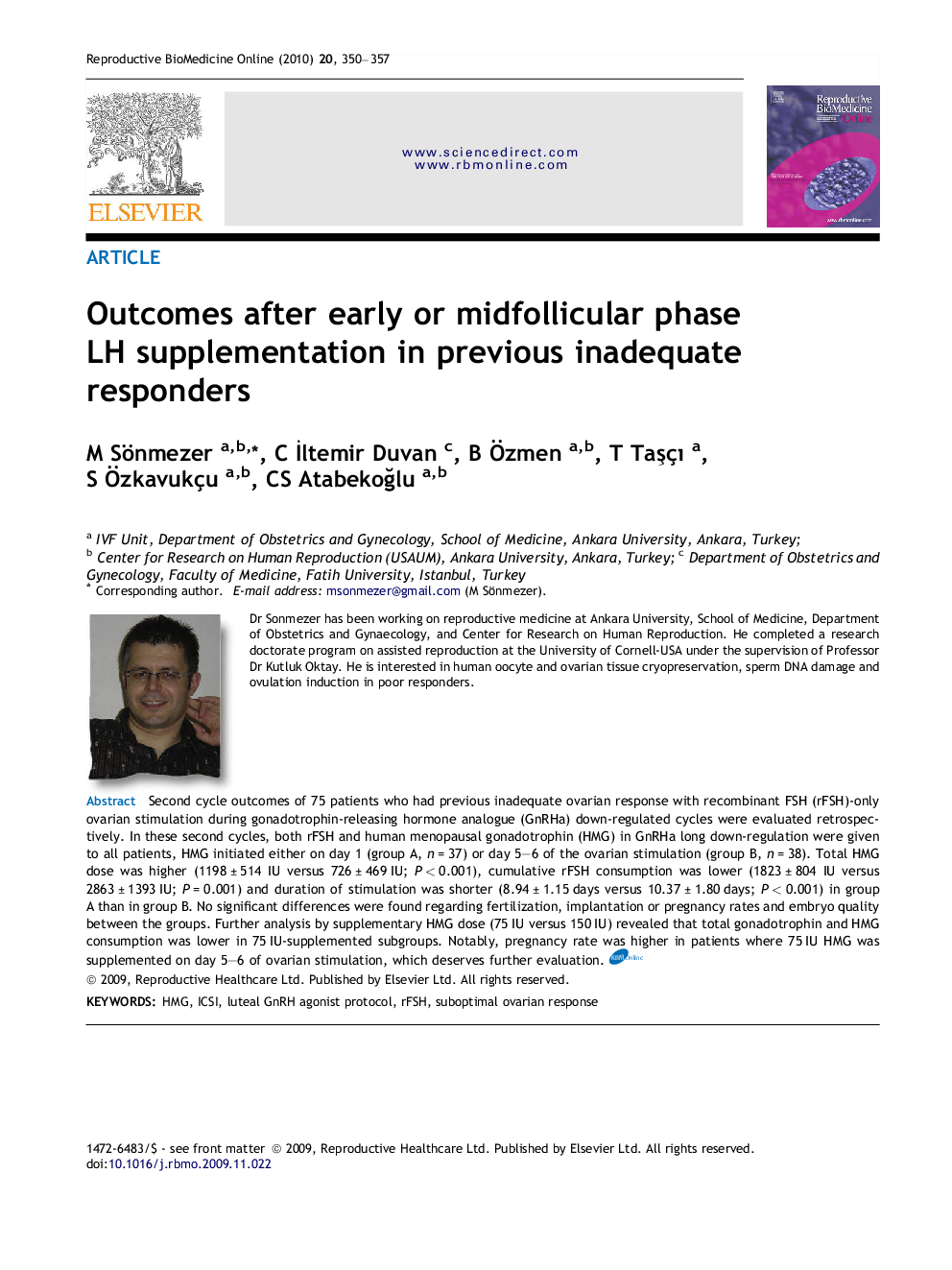| Article ID | Journal | Published Year | Pages | File Type |
|---|---|---|---|---|
| 3971537 | Reproductive BioMedicine Online | 2010 | 8 Pages |
Second cycle outcomes of 75 patients who had previous inadequate ovarian response with recombinant FSH (rFSH)-only ovarian stimulation during gonadotrophin-releasing hormone analogue (GnRHa) down-regulated cycles were evaluated retrospectively. In these second cycles, both rFSH and human menopausal gonadotrophin (HMG) in GnRHa long down-regulation were given to all patients, HMG initiated either on day 1 (group A, n = 37) or day 5–6 of the ovarian stimulation (group B, n = 38). Total HMG dose was higher (1198 ± 514 IU versus 726 ± 469 IU; P < 0.001), cumulative rFSH consumption was lower (1823 ± 804 IU versus 2863 ± 1393 IU; P = 0.001) and duration of stimulation was shorter (8.94 ± 1.15 days versus 10.37 ± 1.80 days; P < 0.001) in group A than in group B. No significant differences were found regarding fertilization, implantation or pregnancy rates and embryo quality between the groups. Further analysis by supplementary HMG dose (75 IU versus 150 IU) revealed that total gonadotrophin and HMG consumption was lower in 75 IU-supplemented subgroups. Notably, pregnancy rate was higher in patients where 75 IU HMG was supplemented on day 5–6 of ovarian stimulation, which deserves further evaluation.
